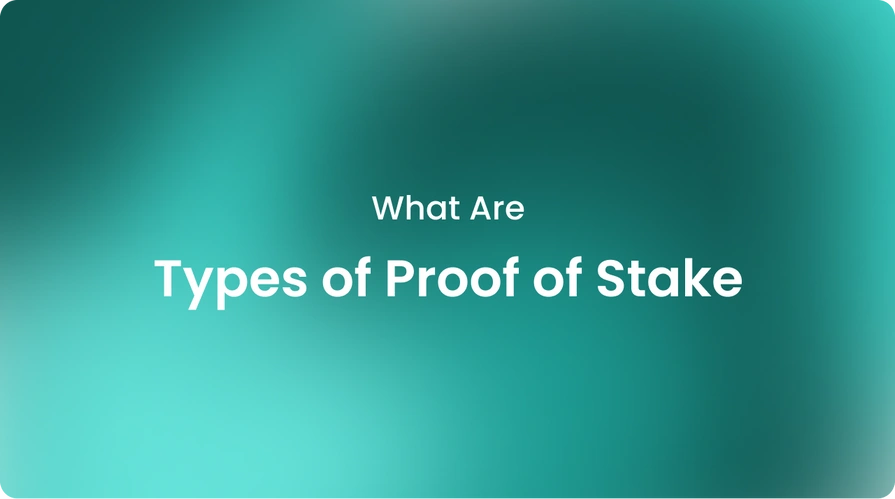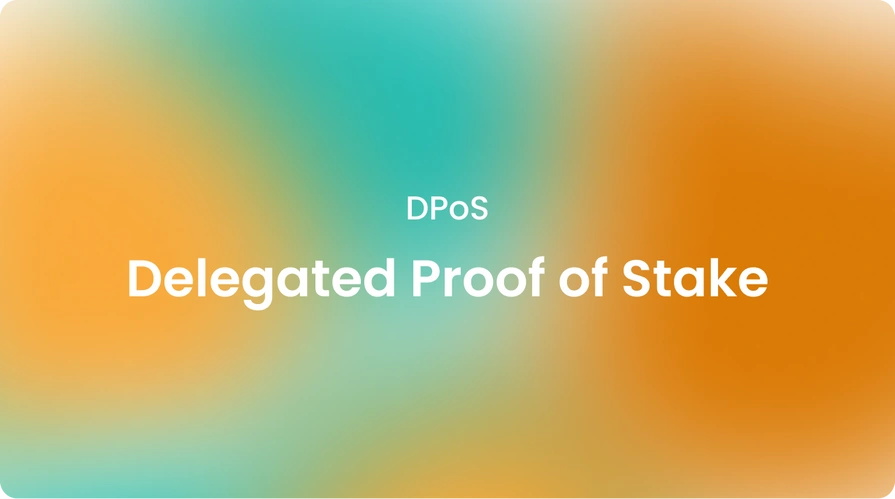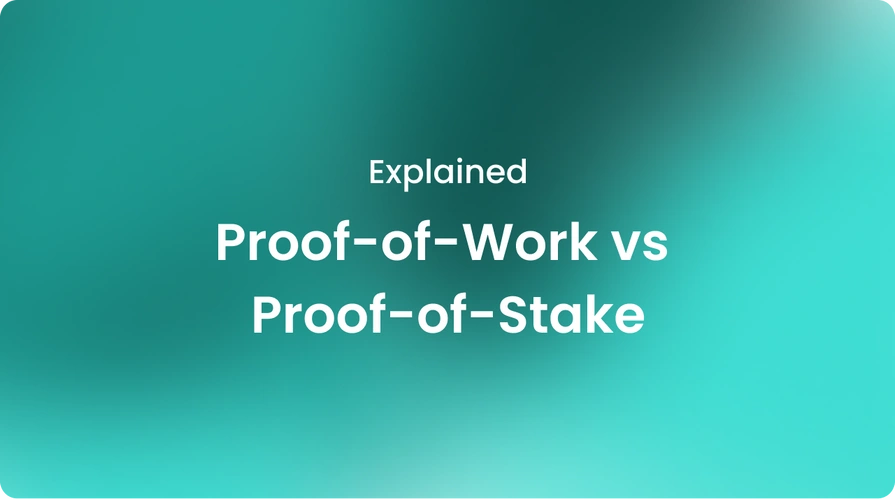|knowledgehub, technology
What Are the Types of Proof of Stake?

Proof-of-stake blockchains and other types of proof of stake have become increasingly popular as an alternative to proof-of-work. As climate change concerns grow, proof-of-stake offers a more sustainable path forward for blockchain. Let's take a deeper look into the proof-of-stake landscape!
There are several main types of proof of stake consensus mechanisms used in blockchain technology today. Here are some of them:
- Delegated Proof-of-Stake (DPoS) allows users to vote for block producers.
- Leased Proof of Stake (LPoS) enables users to lend their stake to others.
- NEM ranks accounts based on their relative stake over time using Pure Proof of Stake (PPoS).
- The Dascoin blockchain employs liquid proof of stake (LPoS) to maximize participation.
- Proof of Importance (PoI) on the NXT platform calculates importance based on a user's wealth and activity.
- Proof of Validation (PoV) aims for random selection.
- Some blockchains use hybrid proof of stake (HPoS), combining elements from multiple models.
- Harmony has taken an innovative approach with Nominated Proof of Stake (NPoS).
Join us in this blog as we explore proof of stake and the types of proof of stake in detail. From delegated proof of stake to nominated proof of stake, we aim to provide you with comprehensive information about the proof of stake consensus mechanism. Let’s start to explore PoS!
How many proof-of-stake blockchains are there?
Proof-of-stake has grown rapidly in popularity as an energy-efficient alternative to proof-of-work. You can check out “PoW vs. PoS” for a detailed comparison. According to research, there are over 200 blockchains that utilize proof-of-stake, or a hybrid model, as of 2024.
This number has grown exponentially in recent years as more projects seek to reduce their environmental impact. Ethereum, the largest blockchain by crypto market cap, successfully transitioned from proof-of-work to proof-of-stake in 2022 through “The Merge" upgrade.
Over 85% of the top 100 cryptocurrencies by market cap now use proof-of-stake blockchains alone or in a hybrid model. The future of the industry appears to be shifting towards more sustainable proof-of-stake protocols.
Delegated Proof-of-Stake (DPoS)
Delegated proof of stake is one of the earliest and most widely implemented forms of proof-of-stake. Under DPoS, crypto token holders can vote for block producers they trust.
Producers generate blocks and receive block rewards in exchange for DPoS. This vote-based system aims to encourage producers to act in the best interests of token holders.
DPoS boasts high transaction throughput but faces criticism over the centralization risk if producers collude. However, supporters argue the voting system mitigates issues over time.
Leased Proof of Stake (LPoS)
With leased proof of stake, token holders can "lease" their stake to validators instead of running a blockchain node themselves. This lowers access barriers and hardware requirements. Token holders collecting lease proposals then vote to elect preferred validators.
Those selected generate and validate blocks, receiving rewards. Many people consider LPoS to be a simpler and more accessible version of standard proof-of-stake. Critics argue that leasing increases centralization. Supporters counter that voting power remains with the true stakeholders.
Pure Proof of Stake (PPoS)
In pure proof of stake, one's likelihood of forging new blocks and earning rewards depends solely on their percentage of the total crypto coin supply staked. Therefore, staking more coins increases the likelihood of being selected as the next forger.
PPoS proponents highlight its transparency and lack of complex consensus methods. Critics argue it overly incentivizes accumulation and centralized control by larger stakeholders at the expense of others. Ongoing parameter adjustments aim to counter this.
Liquid Proof of Stake (LPoS)
Under liquid proof of stake, all staked crypto coins participate in block creation equally and independently of account balance. Each block is forged by randomly selecting a coin, with the probability determined by the duration of continuous staking.
This aims to maximize participation and mitigate power centralization risks. LPoS remains experimental, with few live implementations so far. However, its goal of keeping stakeholders engaged deserves attention in the incentivization debate.
Proof of Importance (PoI)
Proof of importance recognizes the implicit importance of an account based both on its wealth, measured in coin age or total coins held, and on its activity level, measured by token transfers.
While not exclusively based on coin ownership, like PPoS protocols, PoI still favors larger accounts to some extent. It aims to incentivize activity rather than passive accumulation alone. Smart trading-off of such factors may help align stake-based consensus mechanisms with user engagement goals.
Proof of Validation (PoV)
Rather than the highest stake determining validation rights, like in PoS and its variants, proof of validation selects validators randomly proportional to their stake. This helps avoid issues of predictable forgery ordering.
Some blockchains use PoV, where online stakeholders provide "votes" on the validity of blocks. Their stake proportion determines the chances of selection for proposed validations.
Successfully validating extends one's "eligibility" period for future selection. PoV backers argue its randomization improves security and decentralization over PoS. Drawbacks include potential losses if offline during selection.
Hybrid Proof of Stake (HPoS)
Nimiq combines both proof of work and proof of stake, letting miners either hash with CPUs or stake with crypto tokens to process blocks. Hybrid proof of stake balances decentralization with efficiency.
You may need to check out “Crypto hash power” and “Bitcoin’s hash power” to better understand this type of proof-of-stake consensus mechanism.
Nominated Proof of Stake (NPoS)
Tezos delegates block validation through nominations and double-endorsement slashing to prevent malicious behavior. Token holders nominate validators and vote on protocol upgrades in the nominated proof of stake.
There are numerous proof-of-stake systems tailored for different use cases, design philosophies, and tradeoffs between participation, efficiency, and security.
Why is proof of stake important?
Proof-of-stake growth makes it critical for the future of blockchain. As the research shows, the crypto industry's electricity use now exceeds that of some small countries. Proof-of-work's energy demands are unsustainable long-term.
Proof-of-stake addresses this by involving minimal node hardware and "forging" new blocks through coin ownership, not costly crypto mining rigs. This reduces barriers for normal users to participate as validators and provides passive coin appreciation through staking rewards.
With over 200 projects now using PoS, it is becoming the standard consensus model, driving further crypto mainstreaming and adoption.
Transitioning to greener protocols like proof-of-stake will be vital for long-term growth and for the technology to achieve its promise of socio-economic empowerment globally. You can check out “Blockchain for Sustainability Efforts” for more details about this subject!
The bottom line
Proof-of-stake is quickly becoming the preferred consensus model for blockchains due to its clear advantages over proof-of-work in terms of energy efficiency and environmental sustainability.
In this blog, we provided an overview of the most prominent types of proof of stake, like delegated PoS, leased PoS, pure PoS, liquid PoS, and proof-of-importance/validation, highlighting the nuanced approaches each takes.
We analyzed data showing over 85% of top cryptocurrencies now use proof-of-stake-based consensus, indicating its growing importance. With more than 200 blockchains adopting PoS, its future is bright.
Cryptobunq is a one-stop-shop crypto service provider for securing digital assets through proof-of-stake empowerment. Our crypto checkout and invoicing, crypto exchange API, NaaS, and more solutions make it simple to participate in proof-of-stake blockchains through features like staking rewards.
If you want to learn more or integrate our services into your crypto-based projects and applications, explore our case studies and contact us. Explore the sustainable development of blockchain technology globally with Cryptobunq and grow your business with security thanks to our expert solutions!













